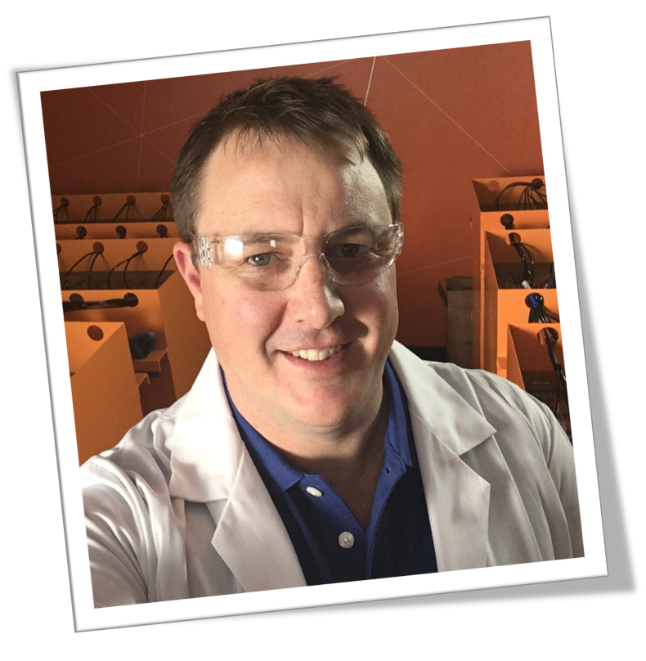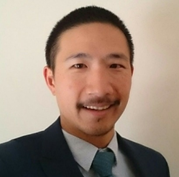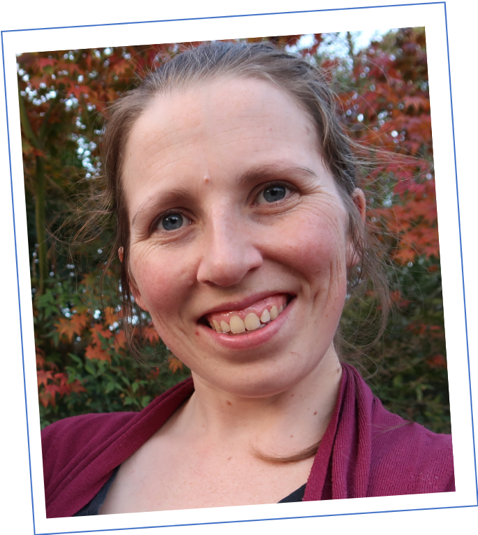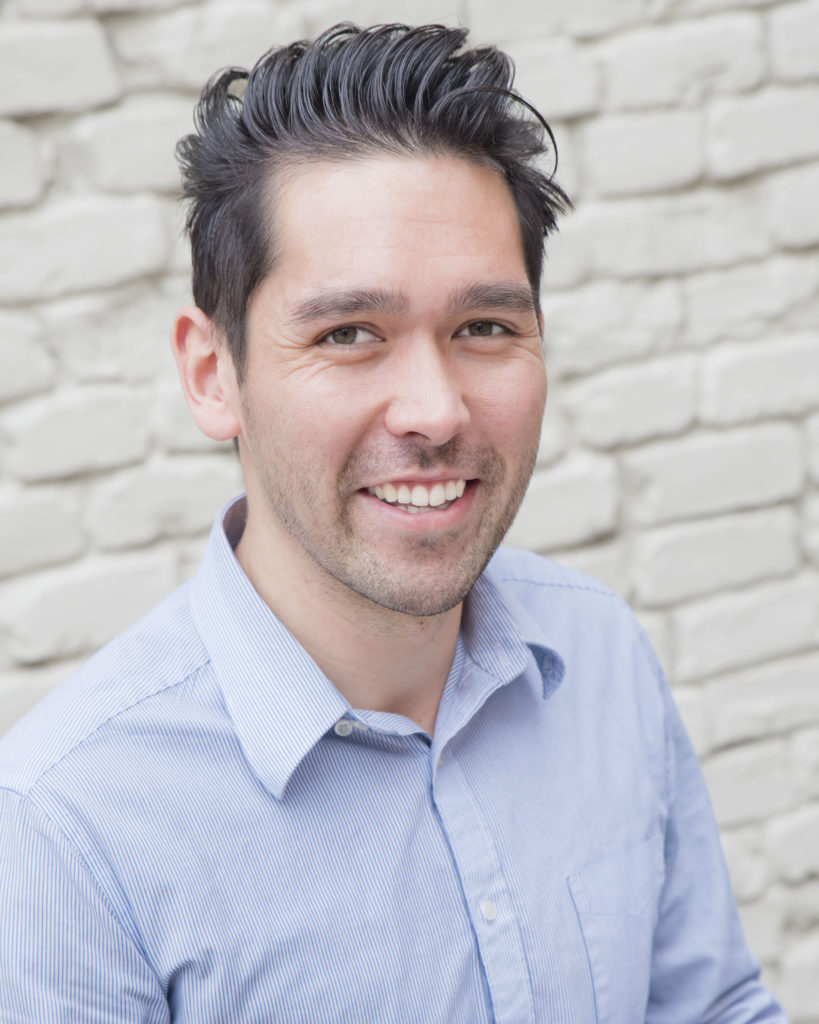Meet Dr Stuart Midgley, June's Hidden Physicist

Employer: DownUnder GeoSolutions
Job title: Systems Architect
Description: I build supercomputers, invent cooling systems, write high-performance computing applications and solve problems. My work allows the world’s most reputable mining companies to process seismic data quickly, to make sure earth tremors or earthquakes don’t delay mining projects.
Career pathway:
Honours in Physics at the ANU; PhD in Theoretical Physics at UWA; academic consultant at the ANU Super computer Facility; returned to WA joining iVEC to encourage industry uptake of HPC; finally ending up at DownUnder GeoSolutions building and managing their growing supercomputers.
Dr Stuart Midgley was our first Hidden Physicist!
Meet Eliza-Jane Pearsall, July's Hidden Physicist
Employer: The Department of Social Services which is tasked with delivering a variety of programs and welfare payments, with the mission to improve the wellbeing of individuals and families in Australian communities.
Job title and description: I’m the Assistant Director of the Policy Analysis section and currently working part time after recently returning from maternity leave. My section builds, and uses a model of the entire Australian tax and transfer system (pensions, allowances, family payments, childcare payments and personal tax). This is based on Centrelink data and is projected over the forward estimates.
We support policy development by providing estimates of the cost and broader effects (e.g. number of people affected and demographics of those people) of proposed policy changes. As a senior member of the team, I provide support and quality assurance of others’ work while supervising and mentoring staff through more challenging requests.
But how do physics skills come into it? So I enjoy applying problem-solving skills to my work, often working with others to apply the technical skills from my physics background in novel ways to address the challenges of predicting the shape of a complex and dynamic population in a very intricate system. We are a close-knit team made up of many members that share a strong technical background. Not only is my work mentally challenging and engaging, but most days when I go home I feel like I’ve made a contribution by providing advice to support policy development with the potential to help the most vulnerable Australians.
Career pathway:
- Bachelor of Science (Advanced) with Honours in Physics at ANU
- 2015 Graduate development program at Department of Social Services.
- Seconded to the Parliamentary Budget Office (Australian Parliament House graduate program) for six months in 2016, working on election costings for Labor, the Greens and various backbenchers.
- Returned to the Policy Analysis section with additional strategic and supervisory responsibilities.
Meet Dr Matthew Lay, August's Hidden Physicist

Job title and employer: Registered Patent Attorney, Associate at FB Rice
Job description: My work includes drafting patent applications covering scientific instrumentation, electronic devices such as medical devices, and mechanical devices such as mining tools. I also prepare responses to exam reports to obtain granted patents from IP Australia and other patent offices overseas. Clients range from local inventors or companies, universities and research institutes, to foreign attorneys representing companies wanting to patent in Australia.
Most of my work involves preparing arguments on how claimed inventions can be distinguished from what was previously known. A good patent attorney therefore needs to have the ability to understand the invention and the known information, as well as have a solid understanding of patent law. My research background plays an important role in the work because it can assist in understanding what researchers or inventors are explaining, providing an insight into how a particular invention works, or realising what alternative embodiments of the invention may be. This is particularly true if it is a physics-based invention, such as spectroscopes, photonic devices, or ultrasonic-based medical diagnostic devices.
I work in a corporate environment and as such am required to manage deadlines and working hours to maximise profits. Typically, I work on up to eight different patent applications on any given day for varying lengths of time. It could mean just a few minutes to deal with an administrative task, such as checking a reminder about a deadline, or it could take an entire day to work on drafting a part of a patent application. Most of my day is therefore usually spent at the desk and strong written communication skills are paramount.
Career pathway:
I completed my PhD from the University of Melbourne researching materials science aspects of silicon quantum computing. After a short experimental research stint at the ANU, I went on to do a postdoc at UNSW in computational modelling of biological systems for immunology and virology, and then a postdoc at the CSIRO in materials analysis of aluminum alloys. I obtained valuable experience in chemistry, biology, electronics, computing, and mechanical devices from the work I did with sample preparation, various experimental measurements and data analysis. Importantly, this enables me to work on patents over a broad range of technologies.
Towards the end of my last postdoc, I simply applied for a job advertised for a trainee patent attorney with experience in physics, engineering and computing. From there I was sponsored to study a Masters in IP law part-time and registered as a patent attorney in Australia and New Zealand about three-and-a-half years later. Most of the learning was, and is, on the job through supervision by senior attorneys.
Meet Jane Turner, September's Hidden Physicist

Employer: Woodside Energy Ltd.
Job title and description: Chief Petrophysicist – Petrophysics is about studying the physical and chemical properties of rock and how it interacts with fluids, particularly in reservoirs of oil and other hydrocarbons.
I’m responsible for ensuring the company properly understands its producing assets, new developments and exploration prospects by ensuring all petrophysical work performed by Woodside or on Woodside’s behalf is reliable, transparent and fit for purpose. I’m also the manager for the Reservoir Development Petrophysical Services Teams.
Career pathway:
- Commercial pilot
- Bachelor of Science Hons (Astrophysics) at the University of Western Australia
- Geomechanicist at Shell Exploration and Production Europe in Aberdeen, Scotland
- Geophysicist, Petrophysicist, Reserves Coordinator, Studies and Wellsite Teams Lead, and currently Chief Petrophysicist – all at Woodside Energy Ltd
Meet Dr Mark Turner, October's Hidden Physicist
Employer: Turner Laser Systems LLC (www.turnerlasersystems.com), a silicon valley start-up founded in 2018 that provides laser micro-machining solutions to high-tech manufacturing companies.
“Our philosophy is to educate customers in laser technology and work with them to find the best process solution for their manufacturing needs. We then translate this knowledge, confidence and experience into robust industrial manufacturing systems, enabling our customers to bridge the gap between product concept and manufacturing success.”
What does your work involve?
“As the CEO of a small technology start-up I have to perform many tasks, including technical sales, marketing, business development, engineering, laser process development and leadership. It is a fun and rewarding experience but also requires huge dedication and commitment, taking a lot of time and energy.
“I often spend a part of my day in our laser laboratory that is set up to perform R&D experiments for our customers who are looking to evaluate laser processing for their manufacturing needs. Each month we have new projects, new lasers and new customer products we are working on.
“My most valuable role however is to build relationships with equipment suppliers, manufacturing partners and our customers. I spend half my time visiting customers, learning about their products and understanding their manufacturing challenges.”
How does physics come into it?
“Physics is absolutely essential to success in this industry in more than one way.
“Firstly, to achieve quality results requires a deep understanding on laser physics, and the fundamental light-matter interaction. Secondly, to provide robust and trusting solutions one must follow a methodological and systematic approach, combined with a curiosity that challenges pre-existing assumptions, which is a trait I learnt from my years as a student of experimental physics.
“This work philosophy has become my greatest asset and gives my customers as well as my team great confidence in a technology that otherwise they would fear from a lack of understanding.”
Describe your career pathway:
“I obtained my PhD in experimental physics at Swinburne University in 2012, then moved to Silicon Valley in 2013 to gain industry and business experience in the laser world. I joined a well-established laser company, IMRA America, as a laser applications engineer for three years.
“After that I joined a small laser start-up company, Prosint, in 2016 to get experience in how to run a business. While technically successful, the company failed to be profitable after two years of operation, and in 2018 joined an automation company, Nexus Automation. Soon after I founded Turner Laser Systems in partnership with Owens Design Inc.”
Meet Virginia Drumm, November's Hidden Physicist

Employer: Icon Cancer Centre Warrnambool
Job title and description: Radiation Oncology Medical Physicist.
What does your work involve?
I look after the linear accelerator we use to deliver radiotherapy to treat cancer patients with millimetre accuracy, and was responsible for collecting the data to characterise the machine. This data underpins all of our patient treatment plan calculations. As well as dealing with ongoing quality assurance, I am often consulted by Radiation Oncologists and Radiation Therapists about complex cases and how to best deliver the treatment required.
How does physics come into it?
I enjoy the challenge of applying the physics knowledge of particle interactions to a real world situation, which may involve a doctor asking if a certain treatment method is possible with a patient lying on a bed in front of you. It is particularly important to know the physical limitations of the system and just how accurate your computer calculations are.
I work at a regional centre which usually means I am the only physicist on site, but working for a nation-wide company with many regional centres means I have a large team to call on for support. I also get the chance to do more of the hands-on front-line maintenance than if engineering support were nearby. I have tremendous job satisfaction knowing that if we weren’t here patients would have to travel several hours for weeks at a time to receive treatment.
Describe your career pathway:
Bachelor of Science with Honours and Master of Philosophy in Physics at University of Melbourne; Medical Physics Registrar at the Alfred hospital in Traralgon and Melbourne; Medical Physicist at South West Regional Cancer Centre.
Meet Max Post, December's Hidden Physicists

Employer: Holcim Australia & New Zealand (www.holcim.com.au), a leading supplier of aggregates, concrete and precast concrete products.
Job title and description: Area Operations Manager.
What does your work involve?
I’m responsible for managing the operations of a number of concrete plants within the Melbourne metro area, with a focus on maximising the performance of my people, plant and fleet. My job is to ensure each site is safely producing and delivering a quality product to our customers. As a leader, building relationships is a key part of my role; I support and develop my staff to ensure I have a highly motivated team with all the necessary tools at their disposal.
How does physics come into it?
For me, physics was more than just a key to open doors. It has formed the whole framework for how I think and approach problems. Although I’m no longer wrapping my head around quantum physics, the everyday issues that arise are greatly aided by the problem-solving methods taught during my degree.
A large part of my time is spent maintaining, repairing and maximising efficiencies in the equipment at each of my sites. This aspect of the job requires a large amount of problem solving which, for me, relies heavily on the skills I developed throughout my physics degree. I find myself systematically isolating each variable within a system to determine the effect on the overall performance. This methodical approach has become a foundation for much of my work, which I credit to physics.
Describe your career pathway:
I studied a double degree: Bachelor of Science (Nanotechnology) and Bachelor of Science (Science), majoring in physics, at the Royal Melbourne Institute of Technology in 2016.
I received my start in the working world as a Technical Officer at Rio Tinto, focusing on lithium and copper extraction. After that I joined the graduate program at Holcim Australia, working in their aggregates, concrete and precast concrete businesses all across Victoria. This led to my current position as an Area Operations Manager at Holcim, in their Victorian concrete division.
Back to the top


